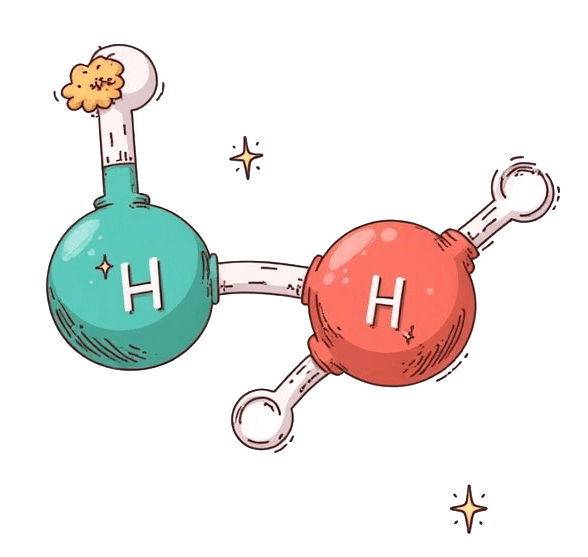From Lab to Life: How Digital Twins are Revolutionizing Chemical Production

The manufacturing of chemicals, for instance, was traditionally developed at great cost through iterative cycles of trial and error. So what if every chemical reaction, piece of equipment and routine of maintenance could be tested over and over again before a single drop of chemicals was ever used? This is just what is becoming possible with ‘digital twins’ – virtual replicas of real-world systems that are fast becoming a crucial part of how industry works, especially in chemical production.

What is a Digital Twin?
Consider a digital twin, an architectural model of an actual chemical plant or some other specific production process, complete with minute details of piping, machinery and so on. The digital twin not only captures what this setup looks like; it emulates and predicts how it acts in response to different conditions. A digital twin can be fed real-time data from its physical counterpart, continuously learning while it runs, and changing itself to reflect what’s happening elsewhere in the real world. It’s a ‘live’ virtual copy with which companies can simulate, test and optimise processes without putting them at risk or exhausting resources by running actual physical experiments.
Why Are Digital Twins a Game Changer for the Chemical Industry?
The impact of digital twins for the chemical industry could be huge. Here are three reasons why.
Better Efficiency, Lower Costs Chemical manufacturers, for example, can run virtual tests of potential reactions and then optimise them as digital twins. A company can try out different temperatures, pressures and ingredient ratios until it finds the most efficient settings – all without having to waste actual materials. Such optimisation can save a huge amount on costs, by reducing waste, lowering energy usage and increasing yield.
Equipment downtime can be super costly to the chemical industry – which is the reason why even a few hours of delay can result in millions in losses. With digital twins, it’s now possible to monitor the equipment in real time and predict when a part might fail so that maintenance can take place even before it breaks down.
Improved Safety Standards Chemical manufacturing is rife with processes and materials that can be dangerous to work with. By simulating ‘what-if’ scenarios, digital twins allow companies to anticipate potential points of failure or safety issues before they actually arise in reality – thus preventing accidents and ensuring safe and efficient chemical production for employees and surrounding communities.
Sustainability and waste reduction By enabling process efficiencies, digital twins can help minimise waste production and reduce the use of expensive and harmful resources, making chemical manufacturing more sustainable. Since digital twins provide a virtual environment in which they can test new ways of manufacturing chemicals that are more sustainable, companies can find ways to green their processes without disrupting active production lines.

Real-World Examples: Digital Twins in Action
A few pioneers in the industry are already using digital twins to transform their operations:
BASF has built digital twins of parts of its chemical production, where new processes can be tested in the virtual world before being applied in the real world, cutting the costs and risks of testing them on a large scale. More on this.
Siemens has created digital twins of certain of its clients in the chemical manufacturing sector, enabling those companies to optimise their energy use and enhance their production efficiency by constantly monitoring and simulating their processes in real time.
For example, Unilever employs digital twins in the design and manufacturing processes for new products, allowing the company to innovate at speed while minimising environmental impact.
What’s Next for Digital Twins in Chemical Production?
While digital twins aren’t yet widespread in the chemical industry, more and more applications are being developed. In the future, there might be multi-point digital twins, where entire chemical plants are integrated into a virtual environment that can be changed in real time according to production needs or market demands.
Digital twins may also prove critical for empowering more customised and agile production. Production plants could easily adapt their output to changing demand, while lowering both downtime and waste, all while benefitting from being able to scale up and down with changing demand. This type of technology may well accelerate the fusion of the virtual and physical spheres of production, and companies who adopt digital twins now are likely to gain a major advantage over those who don’t.

Are Digital Twins the Next Must-Have in Chemical Manufacturing?
The chemical industry is hurtling toward a new frontier of enhanced efficiency, safety and sustainability. Digital twins are helping firms test processes and equipment virtually before committing to them and, as a result, companies are saving money, averting accidents and limiting their environmental footprint. It is a technology with the power to transform the industry, and the more that companies adopt digital twins, the more it is likely to do so.
With digital twins, it’s possible to simulate chemical reactions down to the individual molecule. Could they finally be the future of chemical production? For many companies trying to stay ahead, the answer is yes. We here at Chemistree are excited for this change and look forward to embracing it to better develop the future for chemical and chemical-based solutions.
